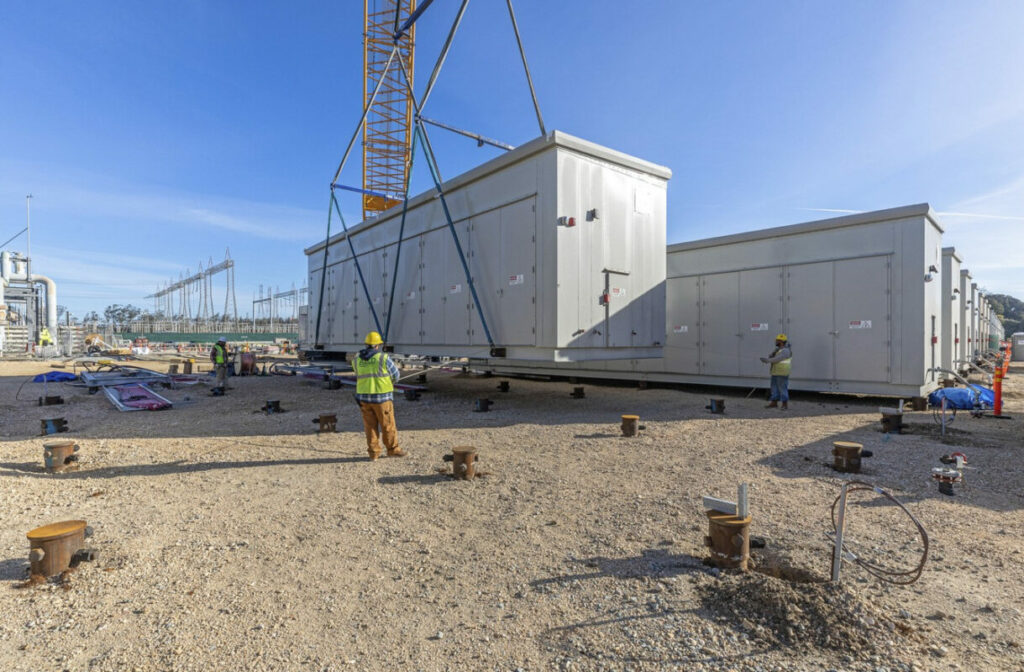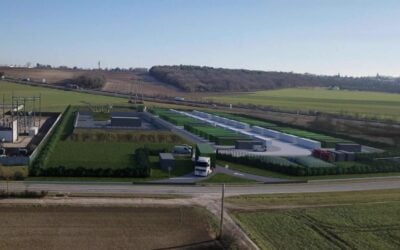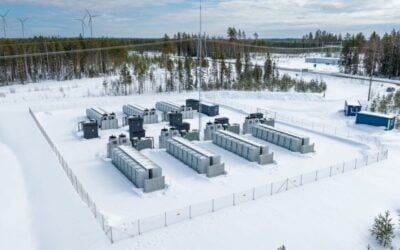
Engineering, procurement and construction (EPC) firm Burns & McDonnell contributes to our end of year review series, looking back on 2023 and ahead to 2024.
Following contributions from US developer Key Capture Energy, grid-scale energy storage system integrators Wärtsilä and IHI Terrasun, Energy Storage Awards winners Fluence, Habitat Energy and Gore Street’s Alex O’Cinneide, we bring you the views of one of the world’s leading EPCs.
Enjoy 12 months of exclusive analysis
- Regular insight and analysis of the industry’s biggest developments
- In-depth interviews with the industry’s leading figures
- Annual digital subscription to the PV Tech Power journal
- Discounts on Solar Media’s portfolio of events, in-person and virtual
The company had over 40,000MWh of energy storage projects it had worked on at this time last year, a figure which will have grown substantially since.
Adam Bernardi, director of renewables sales and strategy and Chris Ruckman, vice president of energy storage share their thoughts on how the market developed in 2023, major challenges facing the industry and what to look out for in 2024.
Energy-Storage.news: What did 2023 mean for the energy storage industry, both from your own company’s perspective and in bigger picture terms?
Burns & McDonnell: 2023 was another banner year for energy storage. The GWs installed continues to increase and energy storage technologies continue to play a pivotal role in the power generation mix across the world. For example, the ERCOT market in North America (ERCOT is in Texas and covers more than 80% of that state – Editor), set another all-time peak demand record of more than 85GW this year and energy storage was a big part of the reason the market was able to achieve this record and maintain stability.
With volatility in market and limited EPCs available, we were able to work with our customers under a collaborative EPC contract approach, which allows us to work through scope, schedule and budget with the client at the table and to identify the critical path to meet their needs. Being able to self-perform the engineering, construction and integration of these facilities was pivotal in helping us deliver these world class facilities on-time, in a market hampered by supply chain issues and craft labor shortages. This market moves so fast and getting projects online before the summer months is often the critical path to profitability, so our partnerships are pivotal to success.
How are energy storage projects and different market opportunities evolving, as technologies and stakeholder understanding mature?
We’ve been in the battery storage market for more than a decade, and I can say that no project we’ve constructed has been the same. The technology is changing so fast, and we’re constantly looking for new, innovative ways to do things and improve our processes to increase efficiency and complete projects safely.
The size of the projects also continues to grow each year. This is a result of technologies getting more energy dense but also owners wanting to maximise their returns while minimising the impacts of factors such as permitting and interconnection.
We are also seeing individual market needs drive the evolution of projects. For example, in ERCOT’s energy-only market we do not see many projects with durations longer than 2-hours while in markets like CAISO it is almost exclusively 4-hour projects.
It also appears that owners are starting to buy more batteries than before and the market is starting to go the way of solar in terms of owner-supplied modules given the lead times, manufacturers’ capacity constraints, and owners’ desire to control that piece of the supply chain.
In the United States, we’re also starting to see more utilities getting into the energy storage space, whereas it used to be primarily developer-led. The Inflation Reduction Act (IRA) has spurred interest from utilities to start looking at adding storage to their portfolio as they look to meet decarbonisation goals.
Everyone is paying attention to the market and the idea of bringing more domestic content to the United States, but for the battery market, it’s not there yet. For now, the immediate focus is around the initial base-requirements, not necessarily the adders, like domestic content.
As an EPC contractor we are working with suppliers to understand what they’re doing from a material and manufacturing perspective, how they’re thinking about compliance, supply chain, onshoring production facilities, and the documentation they will be willing and able to provide.
The last couple of years saw significant supply chain challenges for the industry, particularly around lithium battery and battery materials. Have those constraints eased and what sort of supply chain dynamics are you seeing in the industry going forward?
We currently aren’t hearing a lot about batteries being a constraint from a supply chain perspective. High voltage (HV) equipment, specifically breakers, continues to be the constraint and driver of project schedules. Should we be able to remove that in 2024, and that is a BIG if, [it’s] hard to say if batteries would be next.
We continue to see more and more products released to market which begs the question on if 2024 will be the year of consolidation, or if there is enough demand for even more products to hit the market. Given what we hear on the project side, it feels like there is space for product opportunities to grow with it.
What are some major trends in energy storage technologies that readers should keep an eye out for?
I think this is the year solar-plus-storage sites really start to take off in the United States.
We have seen solar-plus-storage in interconnection ques and some projects being built, but it is not quite the “industry norm”. [However], 2024 may be the tipping point for solar-plus-storage for a few reasons:
- There will be interconnection reform making it easier to add storage to new assets in the queue, the majority of which are solar.
- Battery pricing continues to drop as lithium pricing continues to fall, and this decrease in pricing is greater than the inflationary pressure we see on other commodities and the increases we see in labor costs.
- Finally, the investment tax credit (ITC) for storage will continue to make it economical to consider adding storage to all future assets.
The one caveat is one that happens every four years, 2024 is an election year in the US and that can drive a lot of unforeseen economic changes.
Innovation will continue to move the industry forward. Seconds matter when constructing these projects so we’re always looking for ways to improve our efficiencies, whether that’s through technology or fabricated solutions to help make installing modules less straining on the craft. We think we will continue to see more and more integrated solutions for more “cookie cutter” land opportunities.
However, we are starting to see more complex land areas in terms of smaller sites, more challenging civil conditions, or challenging site constraints which will be the breeding ground for continued innovation around project delivery.
Another thing to keep an eye out on is as the demand for energy storage continues to increase, the spatial availability for new projects is finite. On the US East Coast, states such as New York, Massachusetts, and Virginia have established energy storage targets that require storage solutions. These mandates will require battery energy storage systems (BESS) to be installed in urban areas where many of the installation requirements are different from those BESS facilities that have been located in open areas.
What should the industry’s main priorities be in 2024?
Education. Education. Education. As we talked about at RE+ last year, positive engagement with authorities having jurisdiction (AHJs) is vital for success in the US battery storage industry. We need to continue educating the AHJs on each project we’re building and the change in technologies and what that means for their first responders.
Energy-Storage.news’ publisher Solar Media will host the 5th Energy Storage Summit USA, 19-20 March 2024 in Austin, Texas. Featuring a packed programme of panels, presentations and fireside chats from industry leaders focusing on accelerating the market for energy storage across the country. For more information, go to the website.






